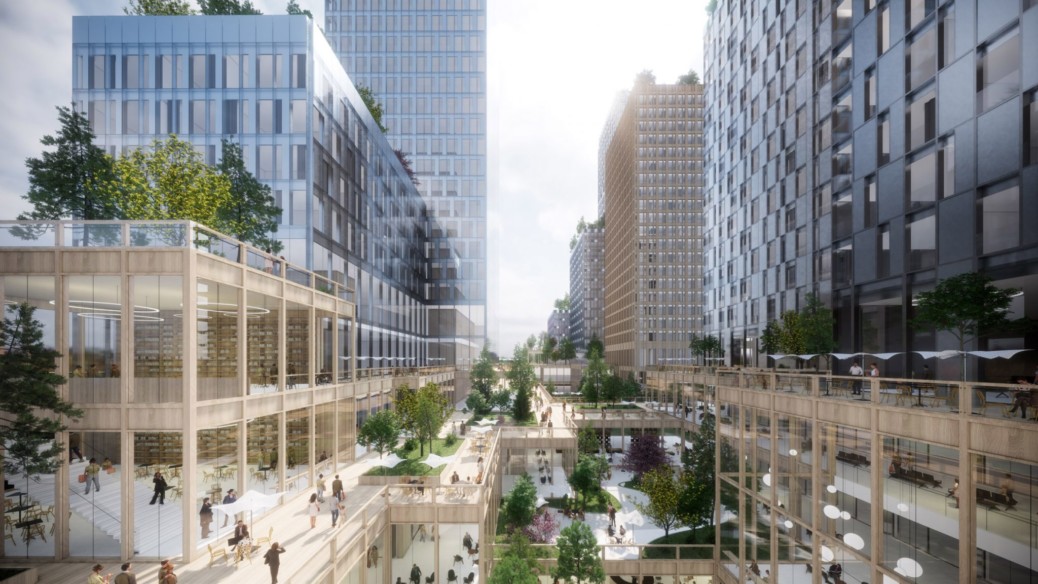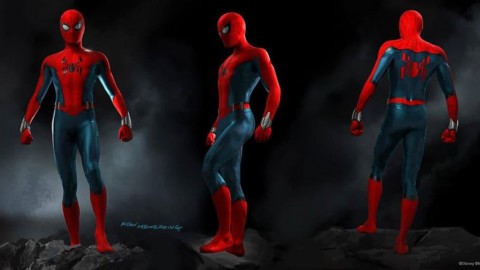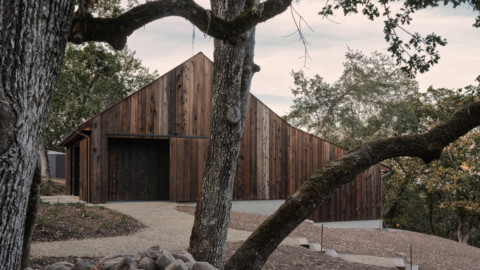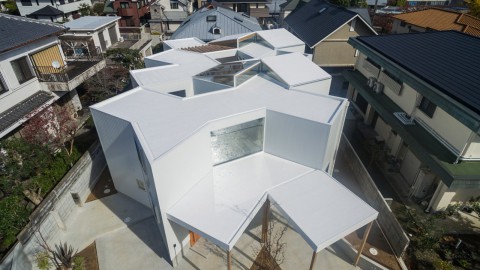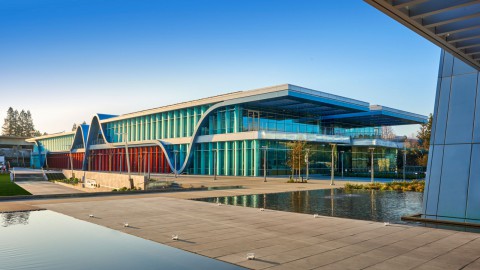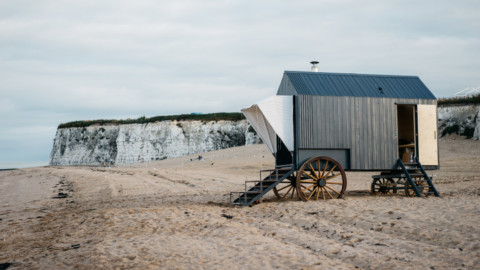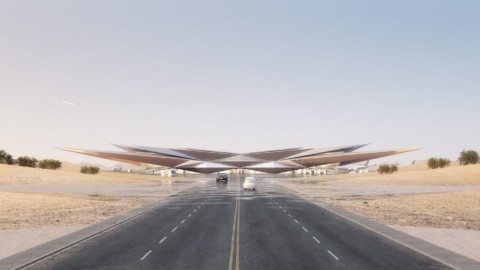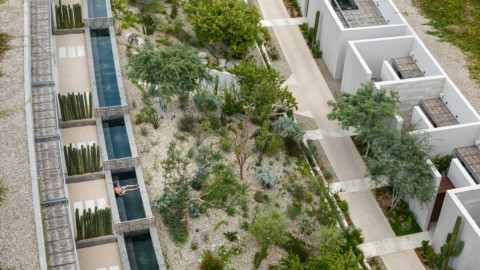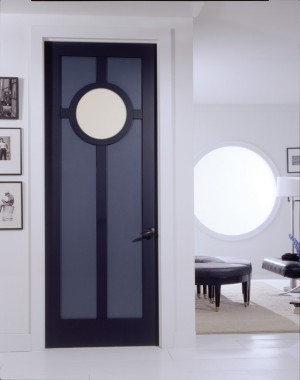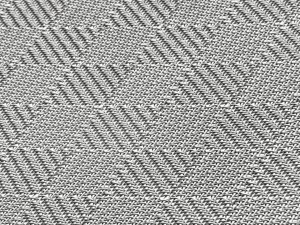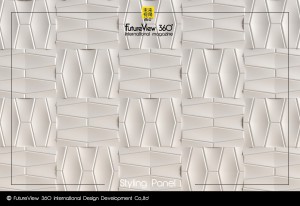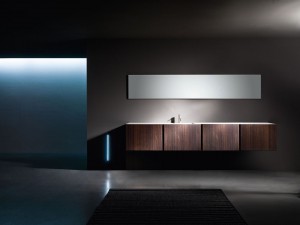A cluster of towers and timber buildings will be swathed by greenery in Seoul Valley, a mixed-use scheme that Danish studio Henning Larsen has proposed for South Korea’s capital.
The 360,644-square-metre development is intended to transform an inaccessible site in the Yongsan District and will incorporate courtyards that link up with MVRDV’s Seoul Skygarden.
Among its facilities will be shops, workshops and a conference centre, alongside towers containing hotels, offices and apartments – designed by Henning Larsen with local architect Siaplan and retail consultant Benoy.
丹麥首府亨寧·拉森(Henning Larsen)為韓國首都提出的混合用途方案,將在漢城谷地周圍綠樹成蔭,覆蓋一堆塔樓和木結構建築。
這個360,644平方米的開發區旨在改造龍山區一個人跡罕至的地方,並將納入與MVRDV的首爾空中花園相連的庭院。
它的設施包括商店,車間和會議中心,以及包含酒店,辦公室和公寓的塔樓,這些塔樓由Henning Larsen與當地建築師Siaplan和零售顧問Benoy設計。
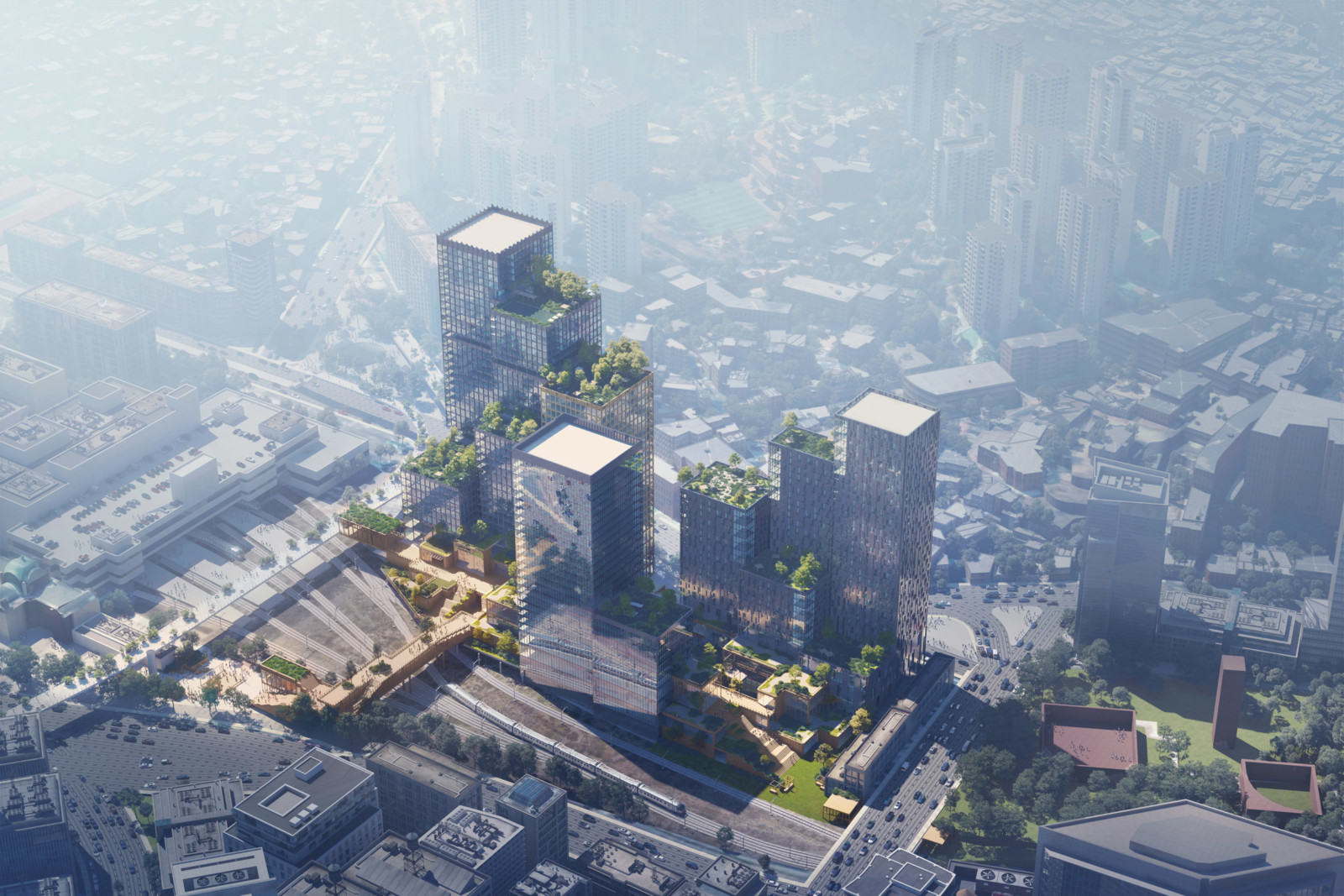
Henning Larsen’s design was the winning proposal in a competition for Seoul Valley, selected over entries by the likes of MVRDV and SOM. It is due to enter the schematic design phase in 2021.
Once complete, it will form a part of a wider masterplan to transform a long, isolated stretch of land sandwiched between Seoul Station’s rail yards and an eight-lane motorway.
漢寧·拉森(Henning Larsen)的設計是首爾谷(Seoul Valley)競賽中的獲勝建議,該作品被MVRDV和SOM之類的作品選中。 它將於2021年進入原理圖設計階段。
一旦完成,它將成為更廣泛總體規劃的一部分,以改造夾在首爾站鐵路站場和八車道高速公路之間的一長片孤立土地。
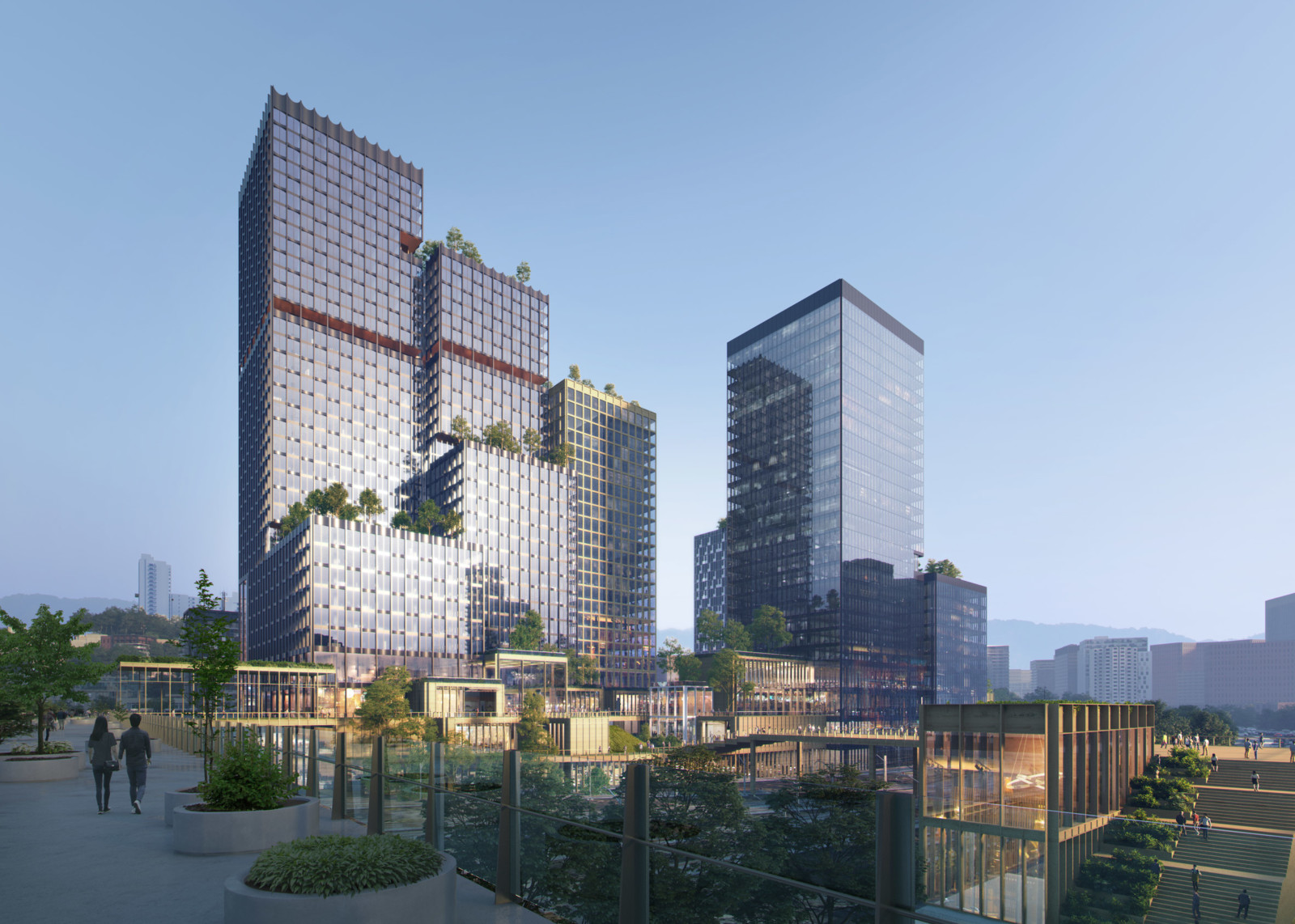
“The area around the Seoul Station is a future development area where the rail tracks will be covered and new commercial and financial districts will rise,” said Nina la Cour Sell, partner at Henning Larsen.
“This district will form the northernmost part of that plan,” she told Dezeen. “Until now the site has been an inaccessible island in the city. With the new development, it will be both an attraction and an urban shortcut in the busy area.”
Henning Larsen的合夥人Nina la Cour Sell說:“首爾站周圍的區域是一個未來的發展區域,鐵路將被覆蓋,新的商業和金融區將興起。”
她告訴Dezeen:“這個地區將成為該計劃的最北端。” “直到現在,該地點一直是這座城市中人跡罕至的島嶼。隨著新的發展,它將成為繁忙地區的吸引力和城市捷徑。”
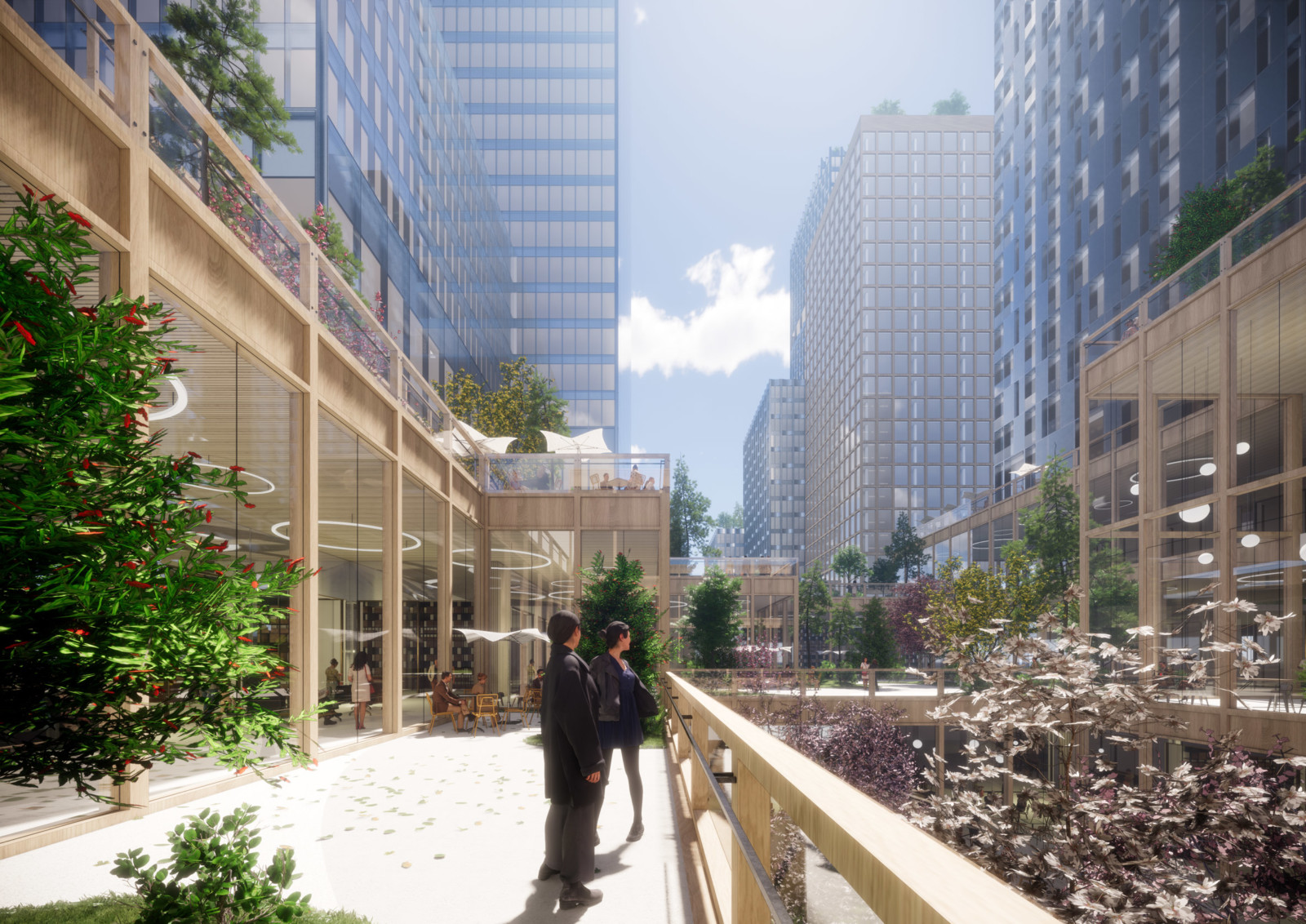
Henning Larsen’s design for Seoul Valley attempts to reconcile the contrasting scales of architecture in Seoul, ranging from the city’s small traditional villages and gardens to contemporary skyscrapers.
It combines a group of towers visible within the city’s skyline with a series of smaller developments that will be staggered around gardens and courtyards to ensure the scheme is human in scale.
漢寧·拉森(Henning Larsen)為首爾谷設計的設計試圖調和首爾建築對比的規模,從城市的小傳統村莊和花園到現代摩天大樓,應有盡有。
它結合了在城市天際線中可見的一組塔樓以及一系列較小的開發項目,這些開發項目將圍繞花園和庭院錯開排列,以確保該計劃具有人性化的意義。
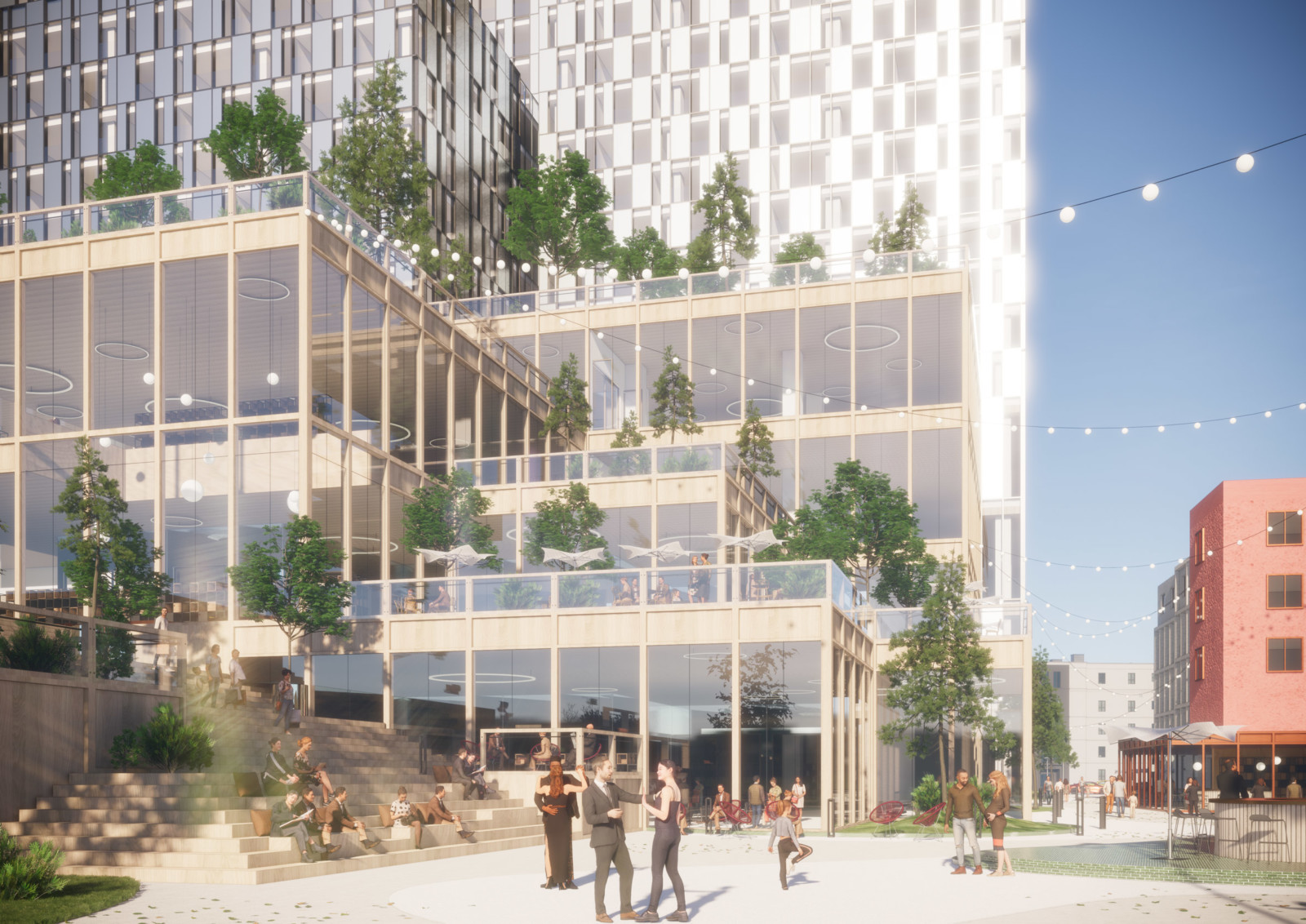
“With Seoul Valley, we were interested in developing a scheme that merged the outsized scale of the city today with the small patchwork structures of its past,” explained Jacob Kurek, Henning Larsen’s partner in charge.
“By dissolving the scale at the public levels, we not only make it feel more livable but nod towards the beautiful structures of old Seoul. Our hope is for Seoul Valley to become a home to not just high-end shops but also craftsmen and artisans.”
亨寧·拉森(Henning Larsen)的合夥人雅各布·庫雷克(Jacob Kurek)解釋說:“與首爾谷地合作,我們有興趣制定一種方案,將當今城市的超大規模與過去的小雜亂的結構融合在一起。”
“通過消除公共場所的規模,我們不僅使它更具居住性,而且向首爾舊城區的美麗建築致敬。我們希望首爾穀不僅成為高檔商店的家園,而且還將成為手工藝者和工匠的家園 。”
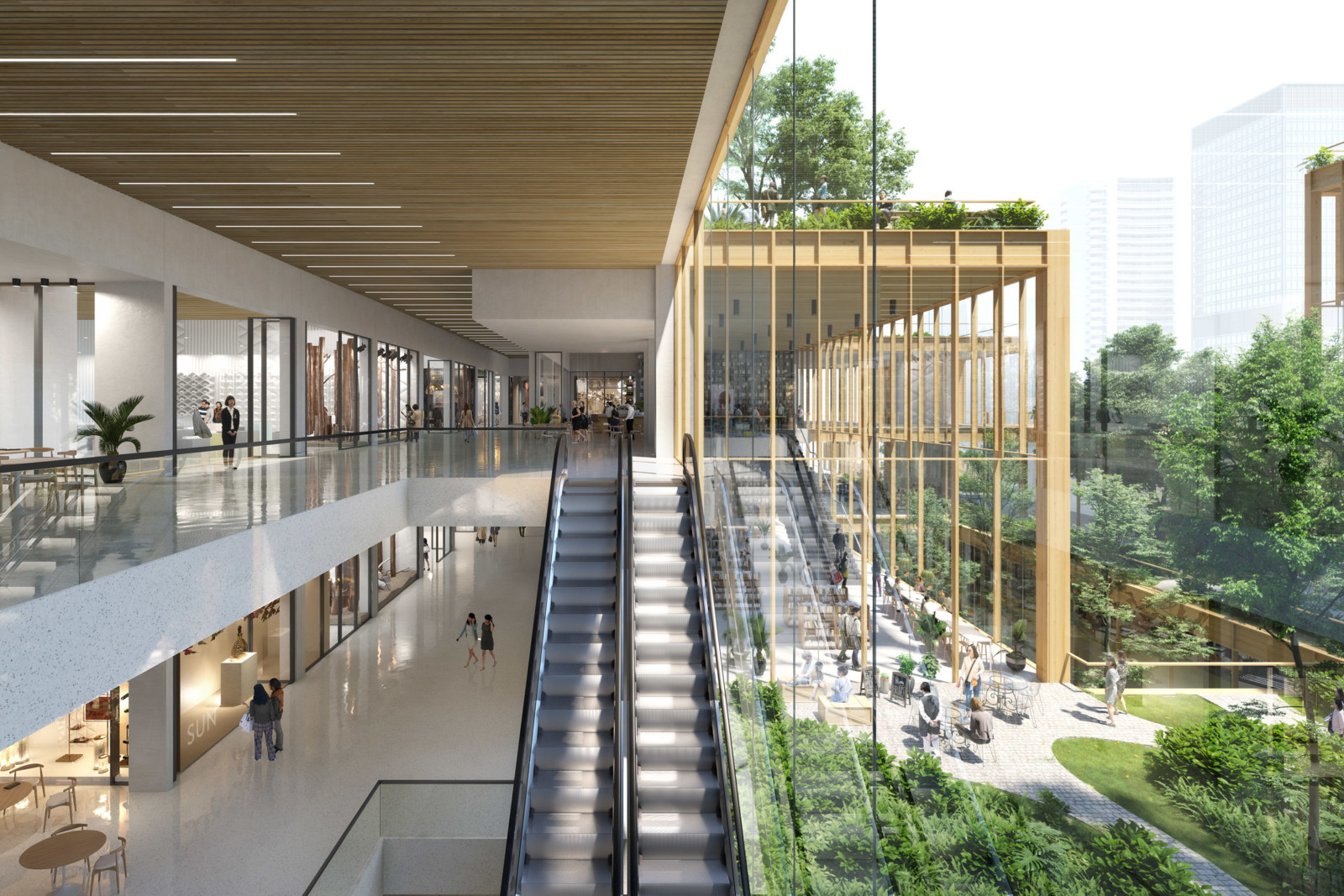
Details of the building’s materiality are to be decided, though each tower is expected to have unique but complementary facade treatments, offering variety while ensuring they read as “one family”.
To help minimise the environmental impact of the scheme, there is an ambition for a large portion of the smaller spaces to be built with sustainably-sourced timber.
建築物的實質性細節尚待確定,儘管每座塔預計將進行獨特但互補的外牆處理,在確保其讀作“一個家庭”的同時,提供多種選擇。
為了最大程度地減少該計劃對環境的影響,雄心勃勃的目標是要在較小的空間中使用可持續來源的木材建造大部分空間。
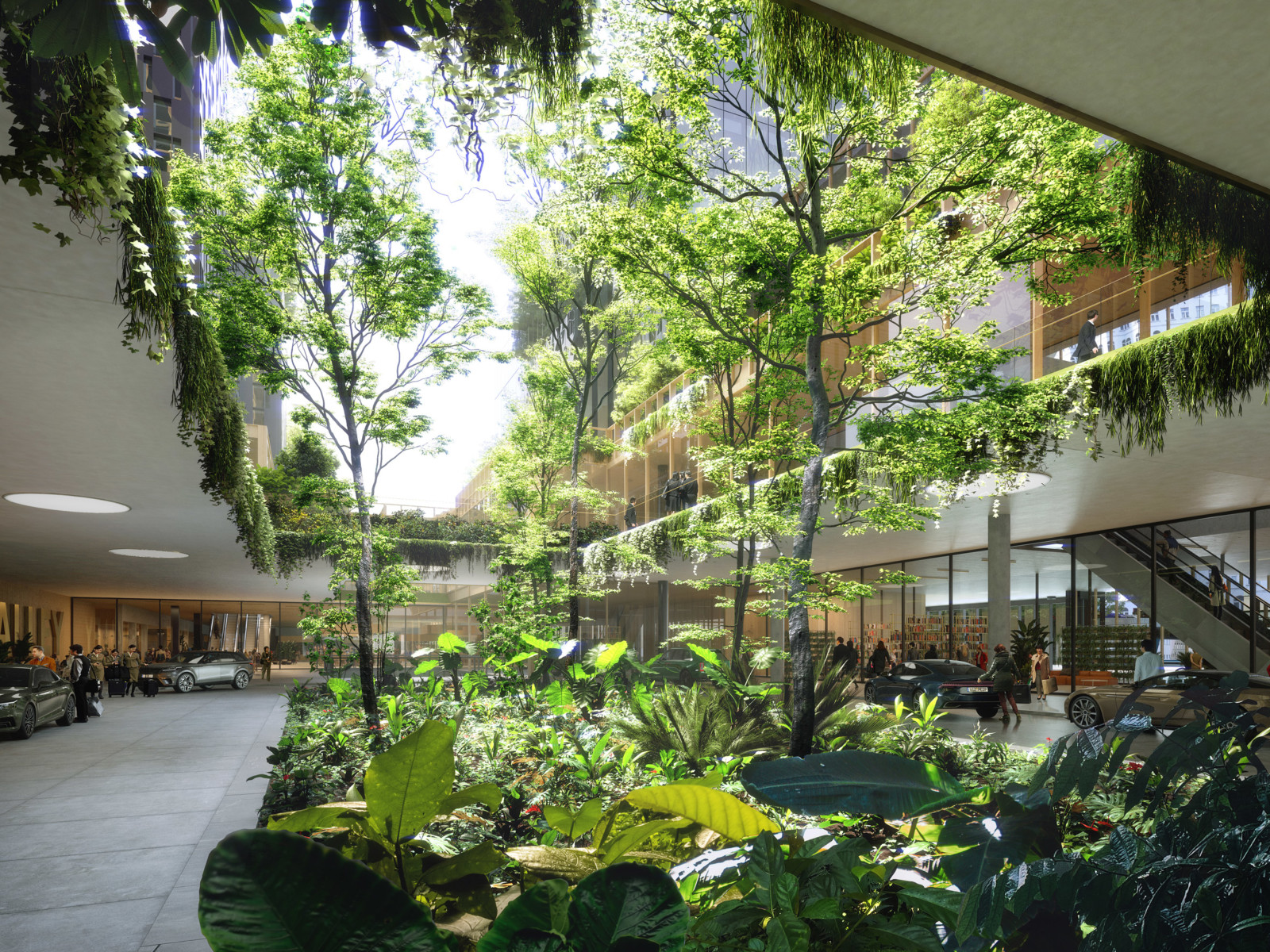
Greenery and landscaping will play a key role in the development, with courtyards, gardens and buildings interiors filled with plants nestled throughout.
This includes a plant-filled podium below the towers that will be landscaped to improve local air quality and support biodiversity, health and wellbeing. It will feature three layers, named the Biospheric Layer, Percolation Layer and Conscious Layer, which will feature different plants species with varying benefits.
Terraces will also be incorporated on the upper levels of the towers to help connect occupants to nature and offer them respite from the bustle of the city.
綠化和美化環境將在開發過程中發揮關鍵作用,庭院,花園和建築物內部到處都是植物。
其中包括在塔下的一個充滿植物的講台,將其美化,以改善當地的空氣質量並支持生物多樣性,健康和福祉。 它將分為三層,分別稱為生物圈層,滲透層和意識層,這將以具有不同益處的不同植物物種為特色。
露台的高層還將建有露台,以幫助將居住者與大自然聯繫起來,並為他們提供從城市喧囂中喘息的機會。
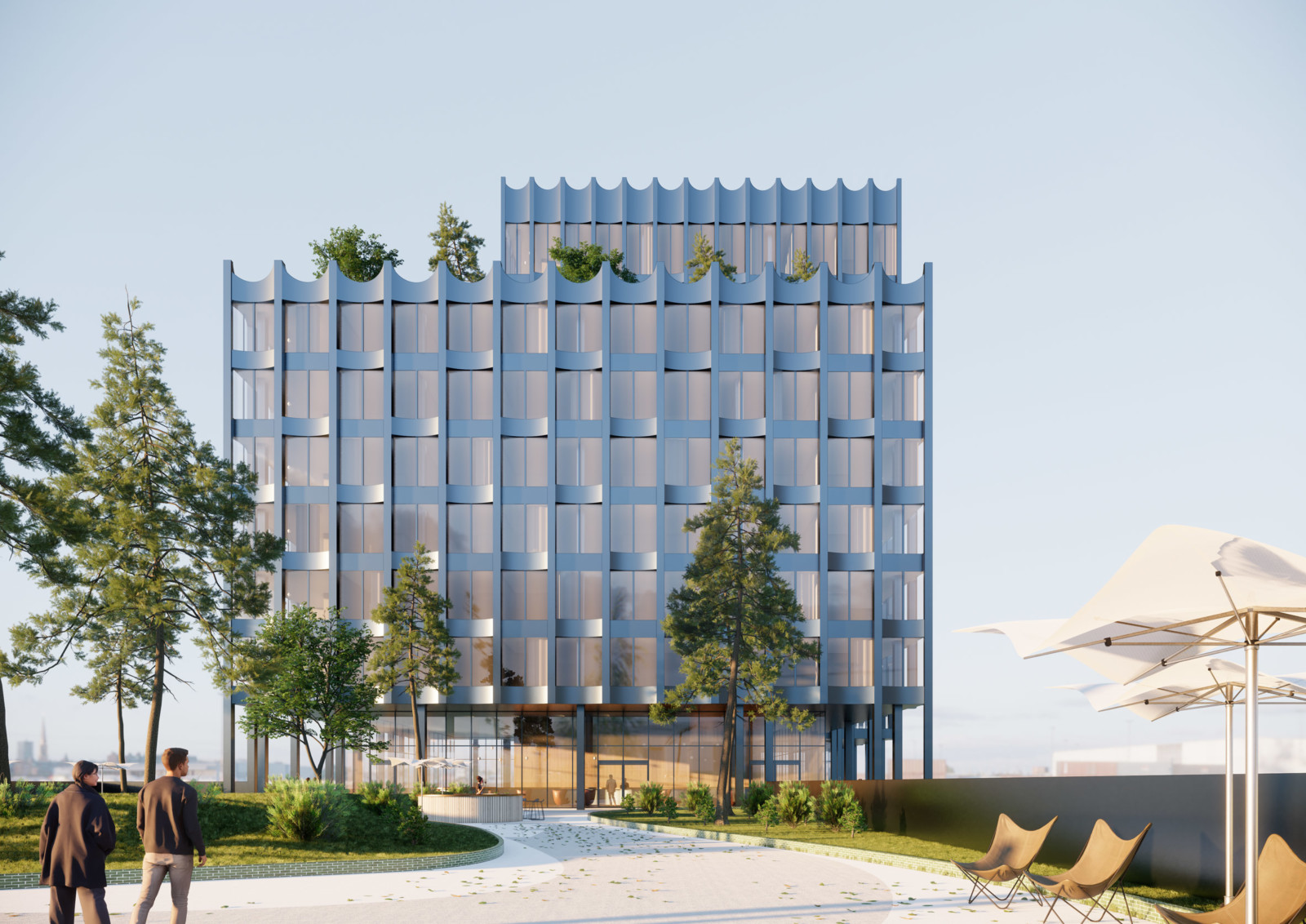
Henning Larsen was established in Copenhagen 1959 by the Danish architect Henning Larsen. It was awarded the European Prize for Architecture in 2019.
Elsewhere, the studio is developing the “first all-timber neighbourhood” in Copenhagen and a two-square-mile business district for Shenzhen.
Visuals are courtesy of Henning Larsen.
Henning Larsen由丹麥建築師Henning Larsen於1959年在哥本哈根成立。 它於2019年榮獲歐洲建築獎。
在其他地方,工作室正在哥本哈根開發“第一個全木材社區”,並在深圳建立一個兩平方英里的商業區。
視覺效果由Henning Larsen提供。
FROM:https://www.dezeen.com/2020/11/27/henning-larsen-seoul-valley-south-korea/

